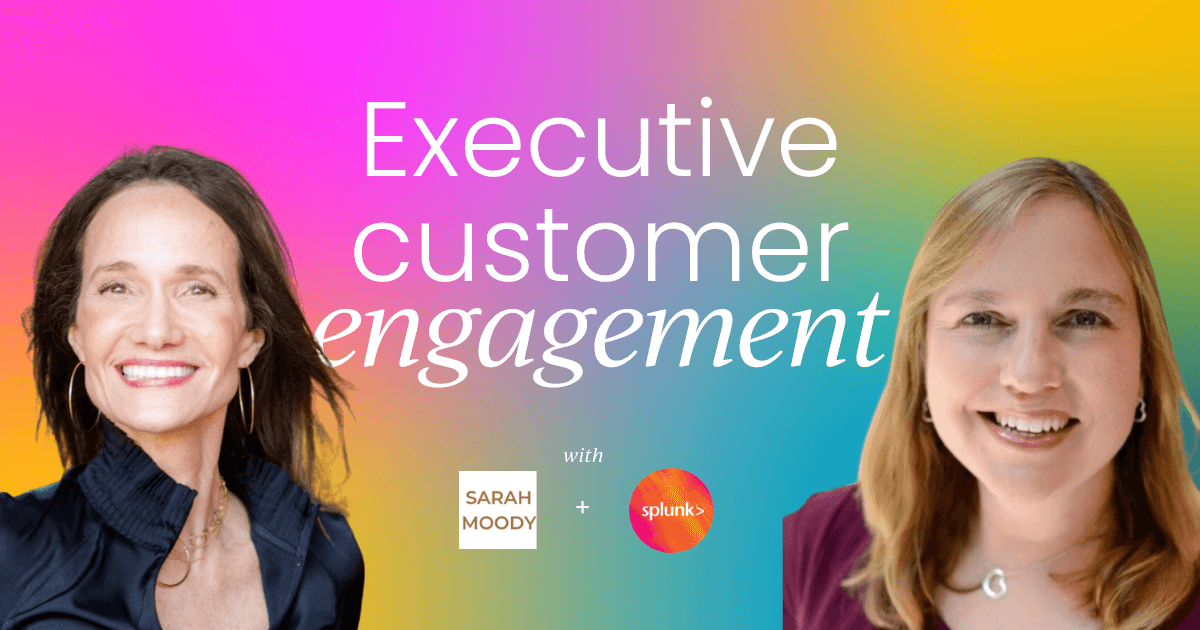In order to really demonstrate the worth of your product and business to your clients, you need backing from their C-suite. Without that buy-in, without a strong relationship with the leaders in your most important customer accounts, you don’t stand a chance of unlocking exponential business growth.
This is a topic we’ve dedicated our careers to, and it's a field we believe is on the verge of becoming its own industry.
While it can feel chaotic and overwhelming, we’re here to share a simple playbook that will make it feel straightforward and easy.
In this article, we’ll present five essential keys to building a successful executive customer engagement strategy. You'll learn how to get the attention of busy C-level executives, build trust, and create a holistic program that drives a real impact on your business's bottom line.
The business case for executive customer engagement
We've been involved in customer engagement and advocacy for a couple of decades now, Early in our careers, we realized the power of connecting with senior executives. We’ve both been in similar situations where we’ve been moved by how willing these executives were to help us grow our business.
We realized that to get the world's biggest brands to publicly advocate for a company, you need to be closely connected with their senior executives. It was at that moment that we both fell in love with the entire field of executive customer engagement.
These are the people who can get things done and remove any hurdles that stand in the way of advocacy. For both of us, the fastest path to "yes" is connecting with C-level people who want to share their company’s story.
Our mutual love of research led us to a recent study from BCG. This research showed that companies that don’t prioritize engaging their executives have 38% lower revenue growth over three years compared to their peers.
In contrast, those that do invest in a great executive experience see a 190% greater growth over the same period. These numbers underscore the critical importance of a well-executed executive customer strategy.
An effective executive customer engagement strategy is about pulling all the disparate pieces of your existing programs into a cohesive, impactful experience.
In most cases, there is no holistic strategy, and executives are left with a poor experience as different teams throughout the company contact them with separate, disjointed requests. We've seen this chaos firsthand, but with our simple playbook, you can turn a chaotic process into a powerful engine for growth.
The five keys to success
Key 1: Content is king
Before the pandemic, it seemed enough to get a senior executive to attend an experience, like a golf outing or an exclusive dinner. But today, you have to earn their time.
It’s no longer sufficient to just be yet another person inviting that executive to yet another Formula 1 race. The best way to earn their time is through valuable content. We’re not talking about yet another white paper or e-book; we're talking about content that provides actionable insights, educates them, and helps them connect with their peers.
Your goal is to create "scroll-stopping" content that makes them think, “Oh my God, you’ve just blown my mind! I had no idea the industry was going in this direction.”
Key 2: Enable influential connections
If you want C-level executives in the room, you must ensure that only their peers are there. It’s that simple. Diluting the attendance with lower-level directors or VPs will dilute the value of the event.
While those individuals may have decision-making power, the C-level attendees won’t feel like they're with their "people," and they won't come back.
It's also crucial to bring executives from your own company who have a similar rank to match the caliber of your customers. Our experience has shown that when C-level executives are surrounded by their peers, they genuinely feel like it was a good use of their time and a worthwhile investment.
Key 3: Be where they're going to be
Many companies are trying to start their own executive communities, roundtables, and events. But what we've found works really well is to meet your customers where they already are.
Look at the conferences and online forums your executives are already a part of. You can team up with these organizations to have your brand present in the conversation. This doesn’t mean you need a keynote spot; it means a C-level executive from your company is part of the conversation alongside their peers.
Key 4: Leverage rolodexes and stalk LinkedIn
Everyone has experienced the deluge of automated, impersonal emails. C-level executives are no different. To cut through the noise, you need to find a way to make a personal connection.
Start by establishing a company-wide top accounts program that aligns with your go-to-market strategy. For example, Splunk has a top 200 list, so everyone in marketing knows exactly who they’re targeting.
From there, you can leverage your executives' existing connections. Go to LinkedIn and other business tools to see if any of your leaders have relationships with the executives on your top accounts list.
You can find connections through previous jobs, volunteer work, or schools. Then, instead of a cold outreach, your executive can make a personal introduction that starts with something like, "Remember, we worked at the same company? I'd love to introduce you to someone." This creates a much friendlier and more effective opening.
These personal connections provide an intimate and deep advisor relationship from the start, and they even create a "bat phone" for when C-level executives need assistance, giving them a direct connection to your company's leadership.
Key 5: Bring it all together
This is the most essential part. Without bringing all the pieces together, you just have scattered programs.
Let’s take Splunk as a case study, they have a holistic approach to this called a "Platinum Program" that integrates the executive sponsor program, executive council, executive briefing center, and a series of CXO events.
The goal is to ensure Splunk’s most important customers are "the first at the buffet,” so to speak, so they’re in prime position for all the best opportunities Splunk has to offer. This includes early access to special invite-only events or new research. This approach ensures that no matter where Splunk’s customer executives are, they have a consistent and great experience.
Because essentially, any platinum program like Splunk’s ties back to basic corporate and marketing priorities, ensuring that what we deliver has a real impact on the business. If you’re to try and adpopt a similar strategy, you need to know from the start that this needs to be a team effort; it takes a cross-functional team to earn the attention of these senior customer executives.
The ultimate sign that you've reached the peak is when executives from your customer accounts are asking to be part of your program. They hear about the fun and value you're providing from their peers, and they want in. When they start coming to you, you know it's working.
This article is based on a joint session Angela and Sarah presented at the virtual Customer Marketing Summit in October 2023. You can watch the session and others from the event with a Pro+ membership plan.


 5 min read
5 min read
 Follow us on LinkedIn
Follow us on LinkedIn



